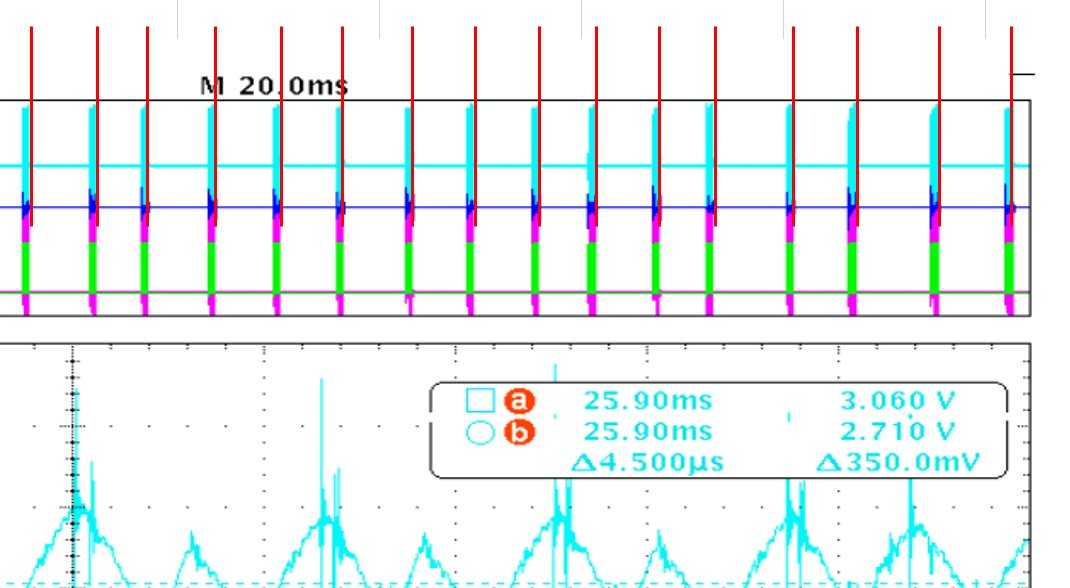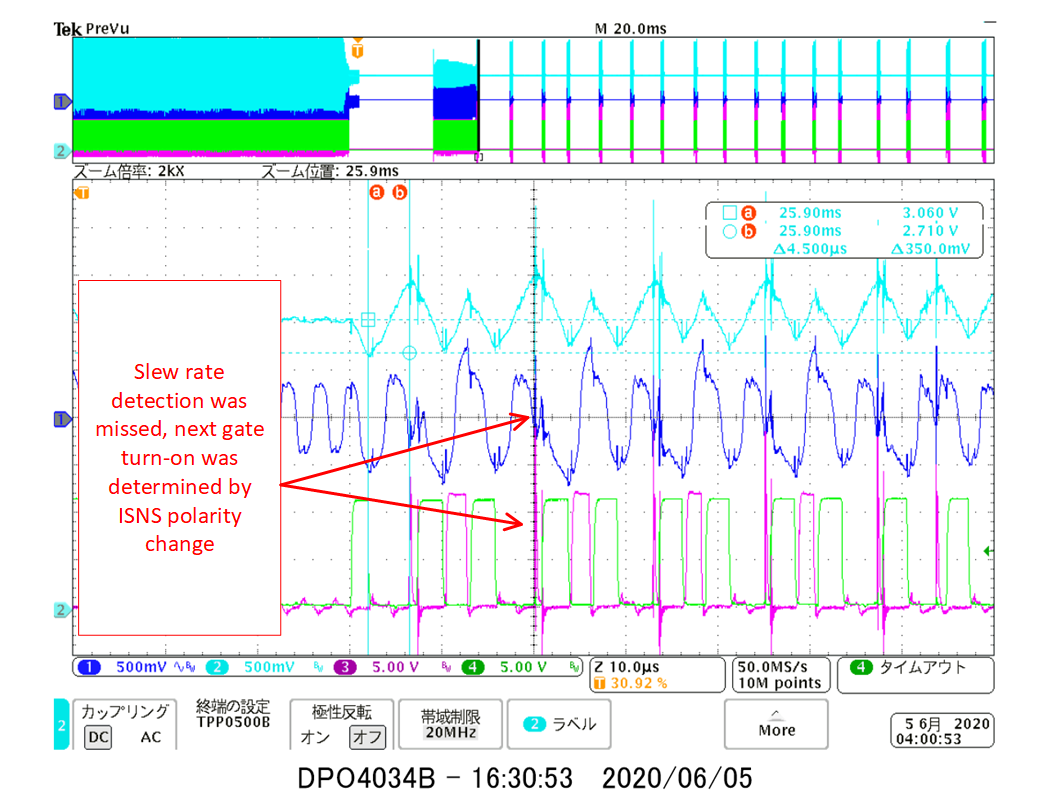Other Parts Discussed in Thread: UCC256402
Hi,
I saw the following thread.
Mike-san commented that "I believe what your are observing is the converter detecting zero current switching ".
To confirm whether my understanding correct, I would like to know that the assumed ZVS detection timing.
Is it assumed each red line timings on the following picture and the attached file?
Best Regards,
Kuramochi






